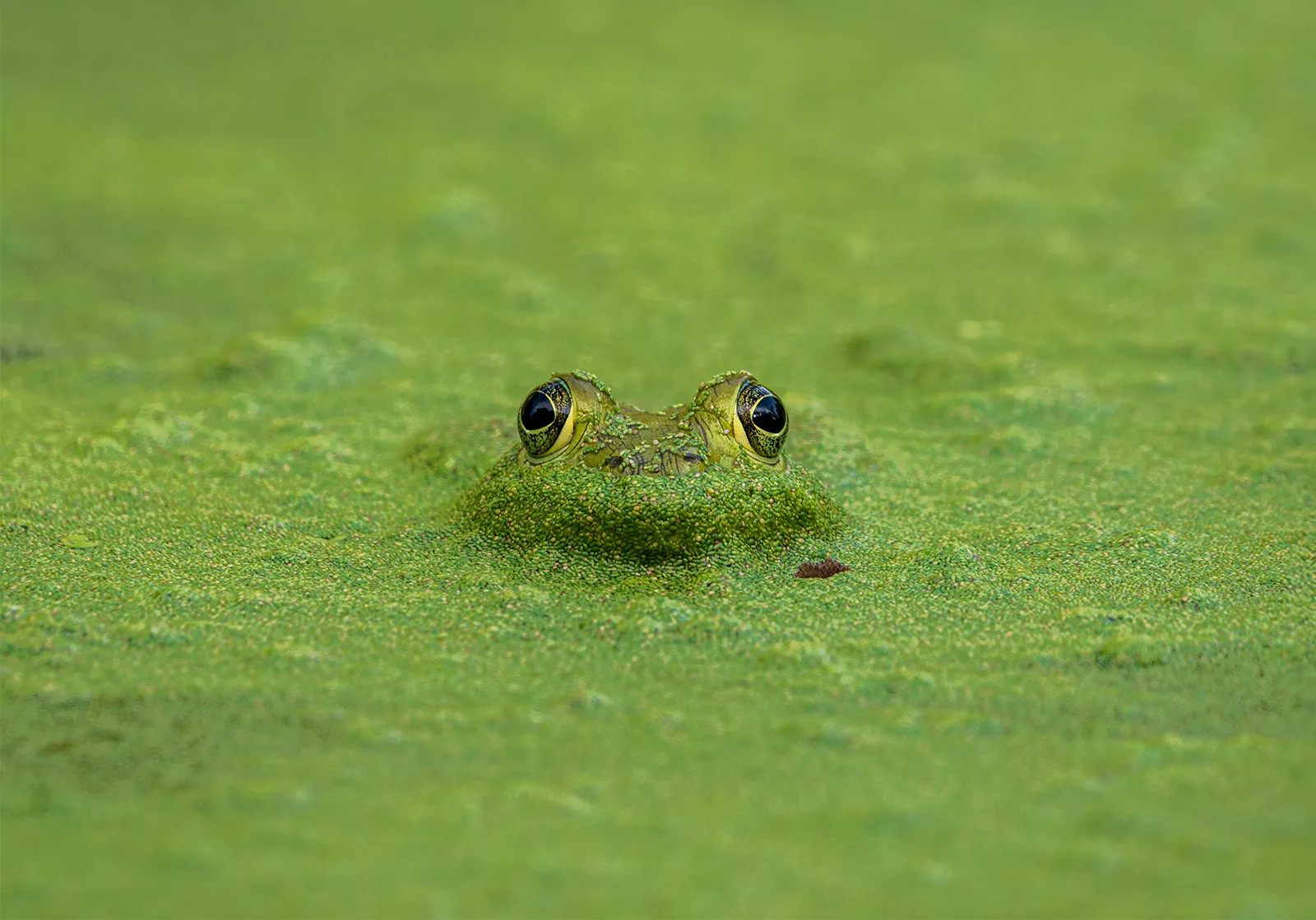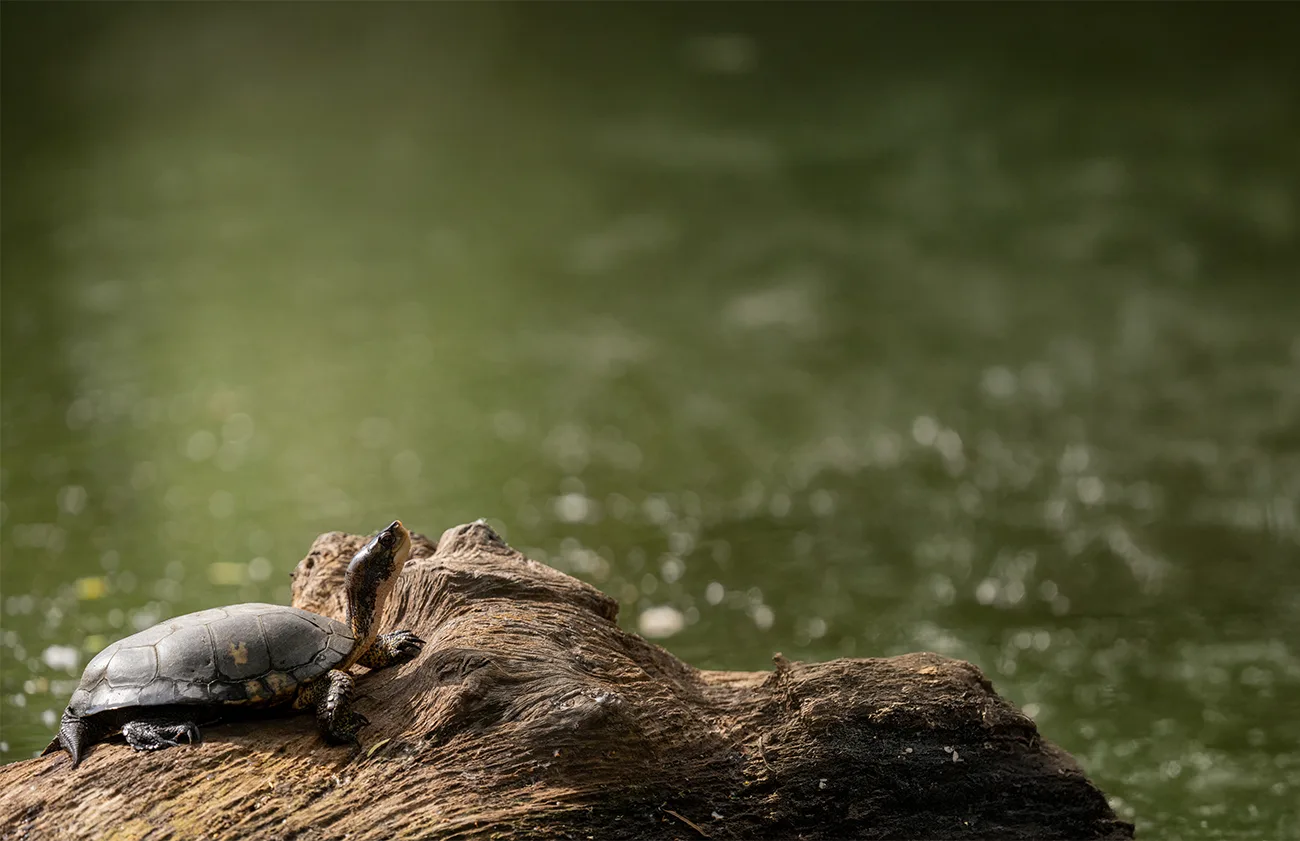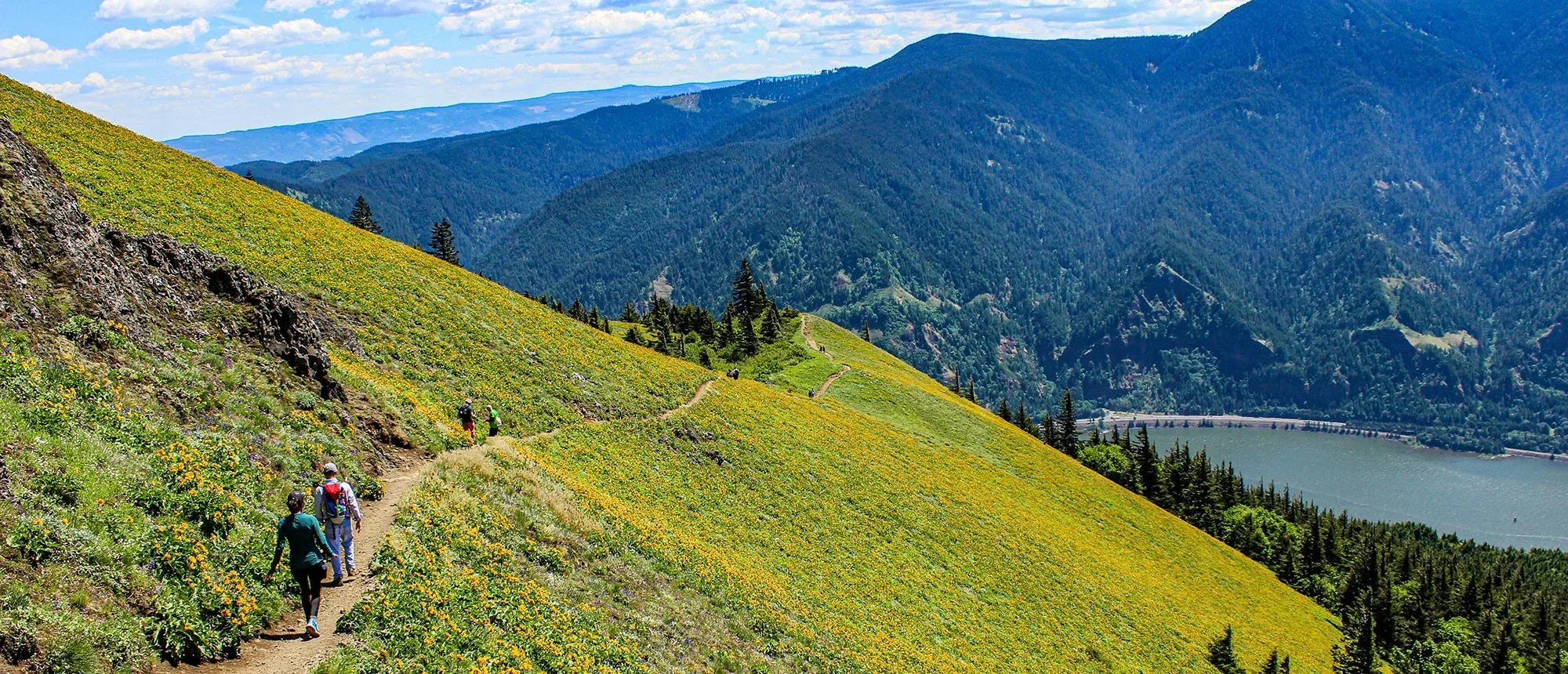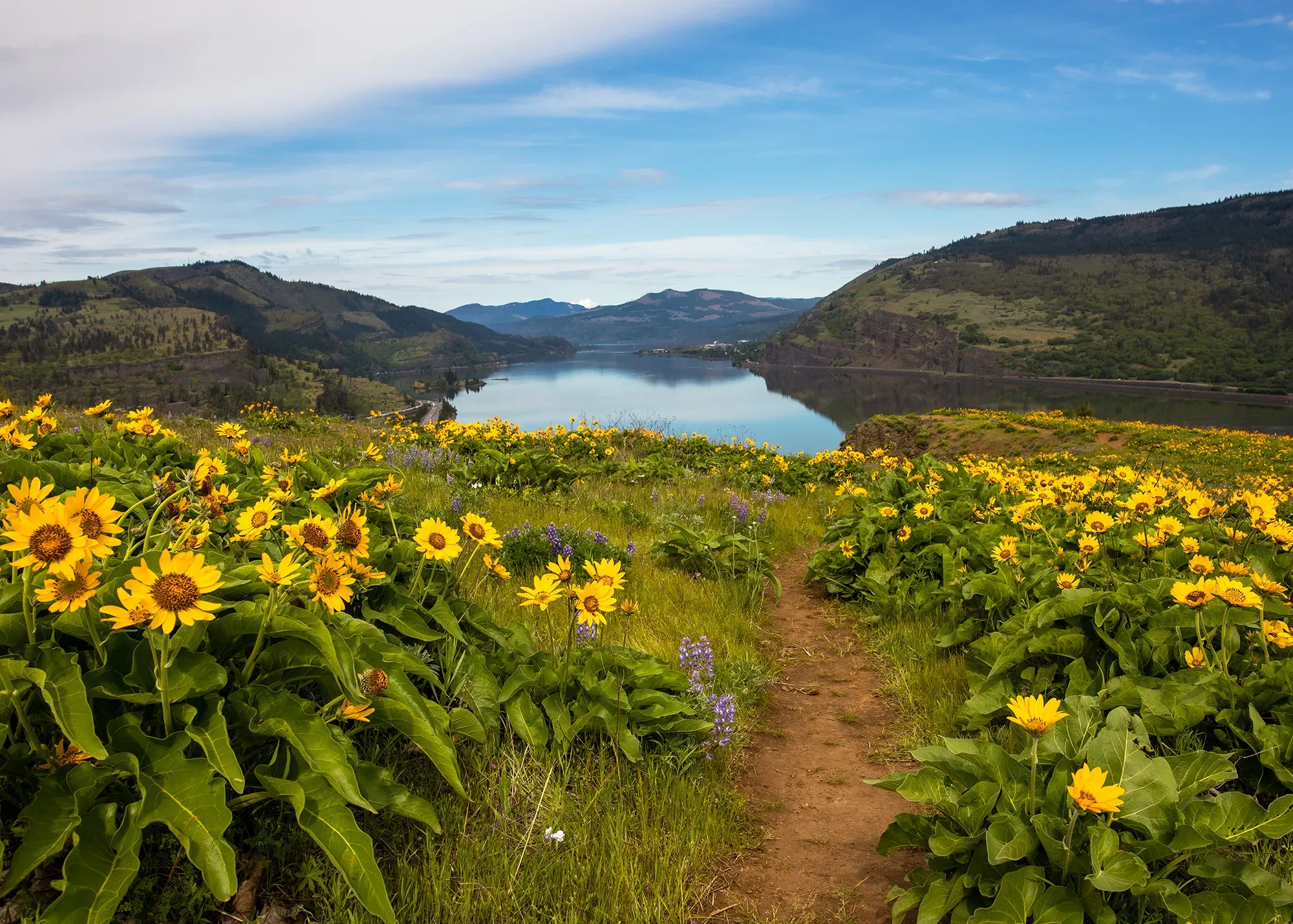Size: 45 acres
Location: Wasco County, OR
Acquired: 2007 and 2008
Mosier Plateau is a beautiful 45-acre public preserve in the Eastern Gorge, located just half a mile from the city center of Mosier, Oregon, and bordered by over a dozen privately owned properties. A haven for wildflower enthusiasts, the plateau boasts over 50 species of native flowers, attracting visitors from around the world to witness its seasonal beauty. In addition to its impressive floral diversity, the property features a small stand of Oregon white oak and ponderosa pine.
The preserve is home to two key habitat types: oak-conifer forests and prairie. Notable plant species include lupine, balsamroot, multiple species of lomatium and buckwheat, cluster lily, and snowberry. Wildlife sightings at the plateau include mountain lion, ringneck snake, black-tailed deer, and various songbirds.
Open year-round, Mosier Plateau features a 3.5-mile out-and-back trail that begins in downtown Mosier and leads to the preserve, offering panoramic views along the way. The plateau is part of the Gorge Towns to Trails initiative, which envisions a 200-mile trail network linking communities and promoting recreational access while encouraging sustainable transportation options throughout the Columbia Gorge.
Latest News

Invasive Predator: Inside the Race to Control the Deadliest Threat to Gorge Turtles

Native Prey: Inside a 30-Year Conservation Partnership to Save a Species


